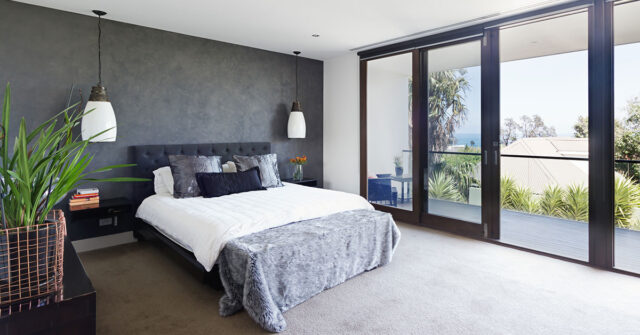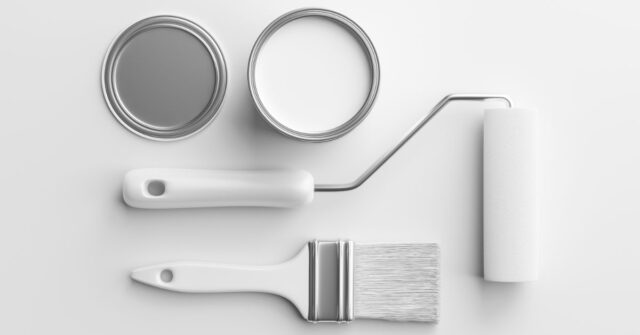Interior design is a field that transforms spaces into aesthetically pleasing and functional environments. The principles of design are the roadmap to creating a beautiful home or office.
In this comprehensive guide, we will explore these principles and how they apply specifically to the Australian market, helping you understand how to create balanced, harmonious, and visually appealing interiors.


Introduction to Interior Design
Interior design is much more than just decorating a space. It’s a multidisciplinary art that requires an understanding of architecture, colour theory, lighting design, and more.
It’s about creating an environment that’s not only aesthetically pleasing but also functional and safe.
The Evolution of Interior Design in Australia
Interior design in Australia has evolved significantly over the years.
Traditionally influenced by European trends, Australian design has grown into a unique style that reflects the country’s diverse landscapes and cultures.
From the earthy tones of outback-inspired designs to coastal styles that echo Australia’s breathtaking beaches, local interior design is as varied as the country itself.
Understanding the Importance of Interior Design
Interior design is crucial as it directly impacts our well-being and how we experience spaces. A well-designed home can improve mood, boost productivity, and promote overall well-being.
Furthermore, it ensures the functionality of a space and can even improve its sustainability.
Principle One: Balance
Balance is a critical principle in interior design. It refers to the distribution of visual weight within a room. Proper balance makes a space feel stable and welcoming.
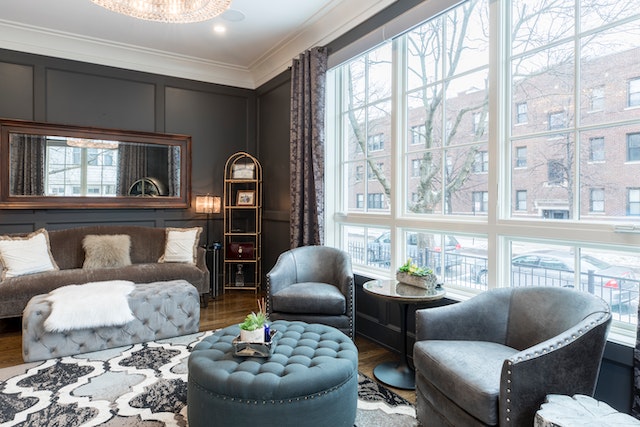

Types of Balance in Interior Design
Balance can be achieved in different ways, each creating a unique aesthetic effect.
Symmetrical Balance
Symmetrical balance, also known as formal balance, involves mirroring components on either side of a central line.
This type of balance is commonly found in traditional interiors and creates a sense of formality, order, and stability.
Asymmetrical Balance
Asymmetrical balance, also known as informal balance, involves different but equally weighted elements placed around a central line. This type of balance is more dynamic and often found in modern interiors.
Radial Balance
Radial balance involves elements arranged around a central point. It’s common in circular dining tables and chandeliers, for example.
Creating Balance in Australian Interior Design
Creating balance in Australian interior design often involves integrating natural elements and light.
For instance, large windows can balance solid walls, while bold, earthy artwork can counterbalance a neutral colour scheme.
Principle Two: Proportion and Scale
Proportion and scale are about the relationships between objects.
Proportion refers to how the elements within an object relate to the object as a whole, while scale relates to the size of one object in comparison to the other objects in a space.
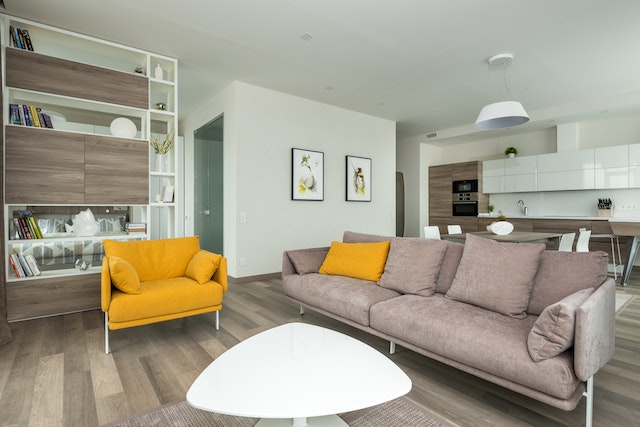

Understanding Proportion and Scale
Understanding proportion and scale is essential in interior design to ensure that furniture and decorative elements fit well together and within the overall space.
Misjudged proportions and scale can make a room feel overwhelming, cluttered, or empty.
Applying Proportion and Scale in Australian Spaces
Australian homes often feature open-plan living, which requires careful consideration of proportion and scale.
Large, bold pieces can help define different areas within the open space, while smaller, proportionally scaled furniture can ensure the space doesn’t feel overcrowded.
The balance between large and small pieces, and how they’re distributed, can significantly impact how spacious and comfortable the room feels.
Principle Three: Emphasis
The emphasis in interior design refers to creating a focal point in the room that immediately draws the eye. This could be a fireplace, a piece of artwork, or an accent wall.
Emphasis gives a room a point of reference and contributes to its overall aesthetic appeal.
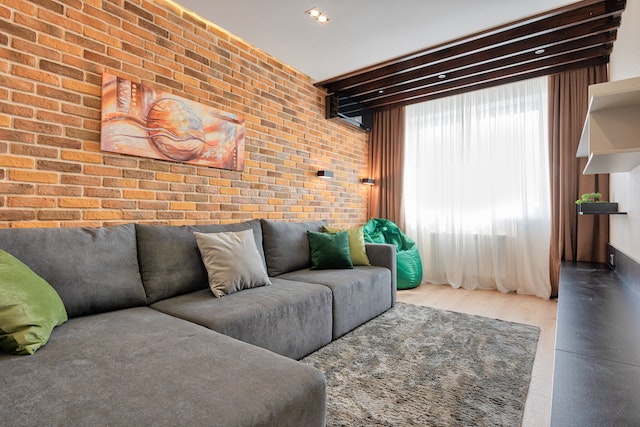

Creating Focal Points and Emphasis Areas
Creating a focal point requires an element that stands out due to its colour, texture, or shape. This could be a large piece of furniture, a feature wall, or a uniquely designed architectural feature.
The other elements in the room should contribute to or accentuate this focal point, leading the eye towards it.
Examples of Emphasis in Australian Interior Design
In Australian interior design, the emphasis often falls on elements that connect the interior with the exterior.
Large windows with views of the ocean, a cityscape, or a lush garden can serve as a stunning focal point.
Alternatively, a distinctive piece of Aboriginal artwork or a uniquely Australian architectural feature like a fireplace in a heritage home can also create a strong emphasis.
Principle Four: Rhythm
Rhythm in interior design is about creating patterns of repetition and contrast to create visual interest.
It provides a sense of movement and can guide the eye from one point to another, creating a flow within the space.
Creating Rhythm through Repetition, Gradation, and Transition
Repetition involves using the same elements, like colour, shape, or texture, throughout the space.
Gradation refers to a gradual increase or decrease of an element, while transition gently leads the eye through an uninterrupted flow, often achieved through the use of curved lines or a winding path.
Rhythm in Australian Interior Design
In Australian interior design, rhythm might be achieved through the repetition of native materials, colours inspired by the Australian landscape, or architectural elements distinctive to Australian design.
Gradation could be implemented through the use of colours that echo the transition from the Australian bush to the sand to the sea.
Principle Five: Harmony and Unity
Harmony and unity involve the overall coherence of a design. All elements should work together and complement each other, creating a consistent and cohesive feel.
Creating a Unified Design
Creating a unified design involves repeating certain elements, like colour, style, or texture, throughout the space.
It’s about ensuring that all parts of a room relate to each other and contribute to the overall theme.


Harmony in Australian Home and Office Spaces
Harmony in Australian home and office spaces often revolves around a connection with the natural environment.
This could mean using a colour palette inspired by the Australian landscape, incorporating native plants, or using locally sourced, natural materials.
Principle Six: Contrast
Contrast is a design principle that can add interest and excitement to a space.
It involves placing opposing elements next to each other to highlight their differences, like dark and light colours, rough and smooth textures, or organic and geometric shapes.
Using Contrast Effectively
Using contrast effectively in interior design can help to guide the eye, create emphasis, and add visual interest.
However, it’s important to balance contrast, as too much can make a room feel chaotic, while too little can make it seem dull. Achieving the right balance can create a dynamic yet harmonious interior.
Examples of Contrast in Australian Interior Design
Australian interior design often takes inspiration from the country’s diverse landscapes.
This might involve contrasting rough textures inspired by the rugged outback with smooth, modern surfaces, or contrasting the vibrant colours of Australia’s flora and fauna with neutral, earthy tones.
Colour in Interior Design
Colour is a powerful tool in interior design. It can change the mood of a room, make it appear larger or smaller, and draw attention to certain features.
Understanding colour theory and how to use it effectively is crucial to successful interior design.
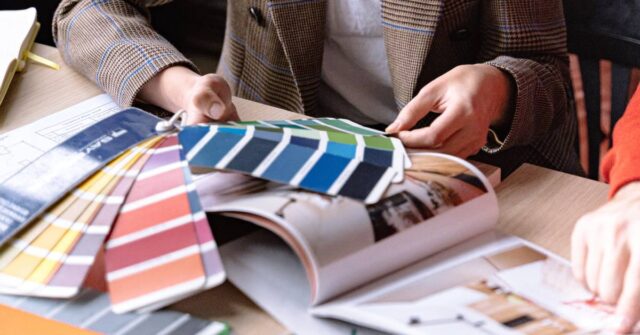

Understanding Colour Theory
This theory involves understanding how colours interact, their psychological effects, and how they influence the perception of space.
It includes concepts such as complementary colours, analogous colours, and the colour wheel.
Applying Colour in Australian Interior Design
Colour in Australian interior design often takes cues from the natural environment. Earthy tones, ocean-inspired blues, vibrant greens, and warm sunset hues are commonly used.
Colour can be used to highlight architectural features, create mood, and establish a connection with the outdoors.
Lighting in Interior Design
Lighting is a key component of interior design. It enhances the aesthetic appeal and creates the mood and ambience of the living space.
It also highlights the colours and shapes of the room, making it a critical element in the overall design process.


The Importance of Lighting
Lighting can make or break an interior. It has the ability to change the mood, perception, and functionality of a space.
Effective lighting design considers the natural light entering the space, task lighting for specific functions, and ambient lighting for mood.
Lighting Considerations in Australian Interior Design
Australian interior design often capitalises on the country’s abundance of natural light. Large windows, skylights, and glass doors are common features.
In terms of artificial lighting, layered lighting schemes that use a mix of task, ambient, and accent lighting are often employed to create a flexible and inviting space.
Furniture and Fixtures
Furniture and fixtures play a crucial role in interior design. They contribute to the functionality, comfort, and aesthetic appeal of a space, making it essential to choose the right pieces.
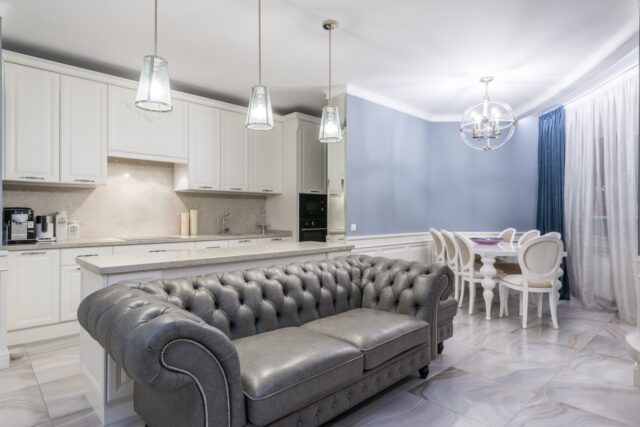

Selecting the Right Furniture
Selecting the right furniture involves considering its function, scale, and style. It should fit the space, serve its purpose, and complement the overall design aesthetic of the room.
The choice of materials, colours, and textures also plays a significant role.
The Role of Fixtures in Australian Interior Design
In Australian interior design, fixtures often have a dual role – functionality and style.
Fixtures like kitchen cabinetry, bathroom fittings, and built-in wardrobes can contribute to the overall design theme, while also serving a specific purpose.
Using fixtures to echo the design concept can create a cohesive and harmonious space.
Texture and Pattern in Interior Design
Texture and pattern add depth and interest to interior design. They can enhance the visual appeal of a space, influence its mood, and contribute to its overall aesthetic.
Adding Texture and Pattern to Your Space
Adding texture and pattern can be achieved through various elements such as fabrics, furniture, flooring, and wall coverings.
Variety can enhance a space, but it’s important to maintain harmony. Too many conflicting textures and patterns can overwhelm the space, while too few can leave it feeling bland.
Texture and Pattern in Australian Interior Design
Texture and pattern in Australian interior design often draw from the country’s natural environment.
This could mean incorporating organic textures like wood, stone, or wool, or using patterns inspired by Australia’s unique flora and fauna.
Combining various textures and patterns can create a rich, layered look that reflects the Australian landscape.
Sustainability in Interior Design
Sustainability has become a significant consideration in interior design.
It involves designing spaces in an environmentally friendly way, considering factors like energy efficiency, sustainable materials, and longevity.
The Importance of Eco-Friendly Design
Eco-friendly design is not only good for the environment, but it can also enhance the comfort and health of the occupants.
It can improve indoor air quality, reduce energy costs, and contribute to a sense of well-being.
Sustainable Practices in Australian Interior Design
Sustainable practices in Australian interior design often involve using locally sourced, sustainable materials, maximising natural light and ventilation, and selecting energy-efficient appliances and fixtures.
Designers might also consider the life cycle of the products and materials they choose, opting for those that are durable, recyclable, or made from renewable resources.
Interior Design Styles
There are many different interior design styles, each with its unique characteristics.
Understanding these styles can help you to define your personal taste and create a space that reflects your personality and lifestyle.
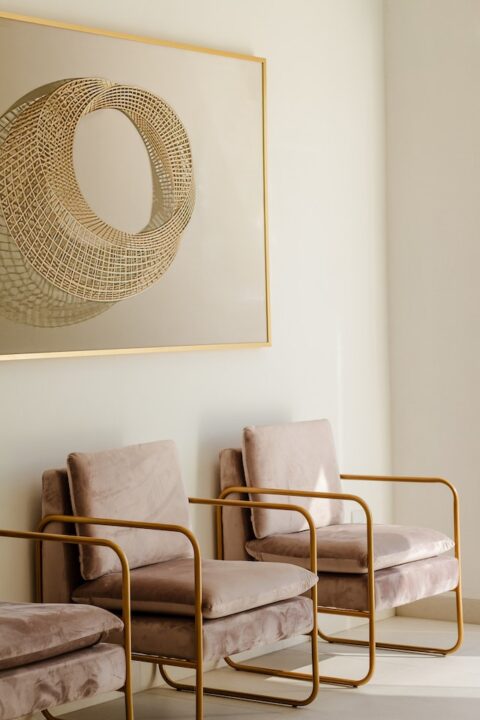

Popular Interior Design Styles in Australia
Australia has a diverse range of popular interior design styles. Some draw from the country’s history and natural environment, while others reflect global trends.
Minimalism
Minimalism is a design style characterised by simplicity, functionality, and a pared-back aesthetic. It often involves a restrained colour palette, clean lines, and a lack of clutter.
In Australia, this style might be combined with natural materials and a connection to the outdoors for a uniquely Australian minimalist aesthetic.
Mid-Century Modern
This design style originates from the mid-20th century. It features clean lines, organic shapes, and a balance of form and function.
In Australia, this style often incorporates local materials and a connection to the surrounding landscape.
Industrial
Industrial design is characterised by raw, unfinished materials, exposed structural elements, and a sense of unfinished beauty. It’s often found in urban apartments and converted warehouses in Australia’s cities.
Coastal
Coastal design is inspired by the beach and ocean. It features a light, airy aesthetic, with a colour palette of blues, whites, and sandy neutrals, natural materials, and ocean-inspired accessories.
This style is particularly popular in Australia’s coastal regions.
Working with Interior Designers
Working with a professional interior designer can help you to achieve your vision for your space.
They have the knowledge and experience to guide you through the design process, making it smoother and more enjoyable.
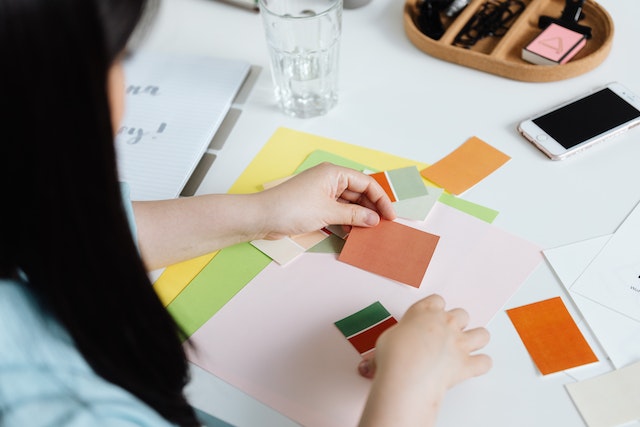

Choosing the Right Interior Designer
Choosing the right interior designer involves considering their style, experience, and approach to design.
You should look at their portfolio, check references, and have an initial consultation to see if they understand your needs and can translate your ideas into a design that suits your lifestyle and taste.
The Role of an Interior Designer in Australia
An interior designer in Australia can guide you through the entire design process. They can help you to define your style, develop a design concept, and select materials, colours, and furnishings.
They can also manage the project, liaising with contractors and suppliers to ensure the design is implemented to a high standard.
Their expertise can save you time and stress, and help you to achieve a result that you might not have been able to create on your own.
Conclusion
Interior design is a complex and multifaceted field, involving a range of principles, elements, and considerations.
Understanding these can help you to create a space that is not only aesthetically pleasing but also functional and comfortable.
Whether you’re designing your own space or working with a professional, the key is to create an environment that reflects your personality and lifestyle, and that you love to be in.


